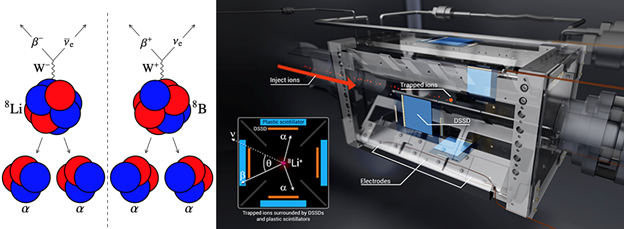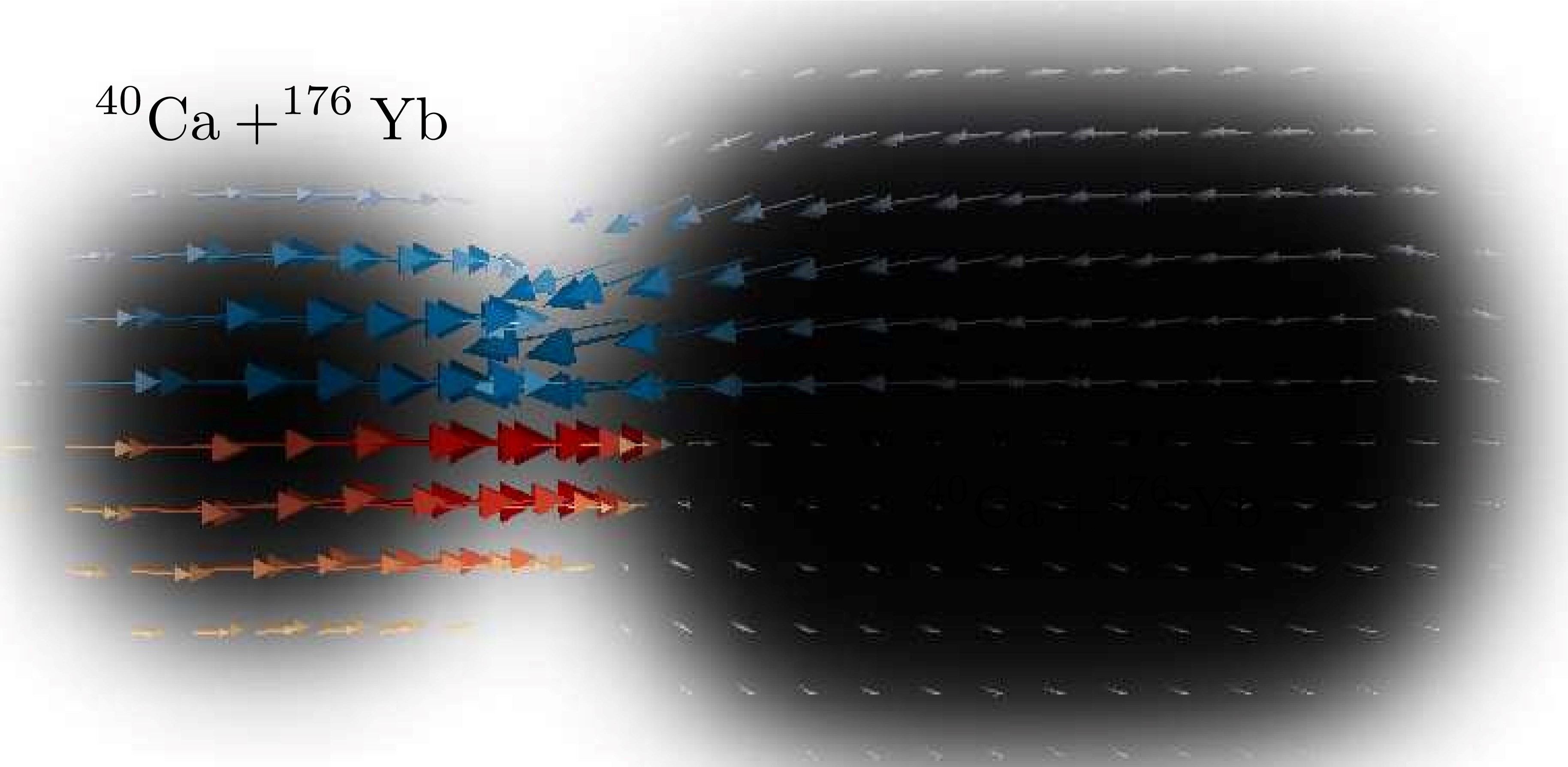New Beta-Decay Measurements in Mirror Nuclei Pin Down the Weak Nuclear Force
Scientists develop a new method to characterize the properties of one of the four fundamental forces of nature.

The Science
The Standard Model of Particle Physics is scientists’ best understanding of the forces that describe how subatomic particles interact. The Standard Model encompasses four forces: the strong nuclear force, the weak nuclear force, the electromagnetic force, and the gravitational force. All four forces govern the way our universe works. However, the weak nuclear force is exceptionally difficult to study as it is overshadowed by the much greater effects of the strong nuclear and electromagnetic forces. Scientists have gained new insights into the weak nuclear force from detailed studies of the beta decays of the “mirror” nuclei lithium-8 and boron-8. Mirror nuclei are atoms with reversed numbers of protons and neutrons. For example, lithium-8 has three protons and five neutrons, while boron-8 has five protons and three neutrons.
The Impact
Scientists have performed a new, more sensitive measurement of beta decay properties to hunt for a theorized feature of the weak nuclear force not currently included in the Standard Model. The weak nuclear force drives the process of nuclear beta decay. In beta decay, a proton or neutron in a nucleus emits a beta particle (an electron or its anti-particle, a positron) and a neutrino. The properties of the beta decays of the radioactive mirror nuclei lithium-8 and boron-8 are in perfect agreement with the predictions of the Standard Model. This effort combines state-of-the-art experimental and theoretical methods and paves the way for future advances in the study of the weak nuclear force.
Summary
A team of nuclear scientists from Lawrence Livermore National Laboratory, Argonne National Laboratory, and Louisiana State University precisely measured the beta-decay properties of the “mirror” nuclei lithium-8 and boron-8 to better understand the weak nuclear force. Mirror nuclei have the same total number of protons and neutrons, but the numbers of each particle are reversed. Mirror nuclei provide an opportunity to study the weak nuclear force with increased sensitivity. The predicted signature of many of the sought-after new effects would give rise to opposite contributions in the two different nuclei. This would allow scientists to compare the lithium-8 and boron-8 results to isolate the contributions to the decay from each nucleus.
By studying both these nuclei with the Beta-decay Paul Trap, a device that holds clouds of ions in vacuum, the researchers determined the energies and directions of the emitted beta particle and two alpha particles with high precision. This approach allowed the researchers to reconstruct the full decay properties, including the contribution from the unseen neutrino. The Standard Model (SM) predicts the distribution of emission angles for the beta particle and neutrino, and any observed difference would reveal new aspects of the weak nuclear force. The team was looking for differences smaller than 1%, which required a thorough understanding of the apparatus and detection system, paired with a newly developed first-principle approach using “Symmetry-Adapted No-Core Shell Model theory” to account for a number of small effects that arise from the complicated environment of the nucleus. The results were the highest precision of their kind and confirmed the SM prediction with increased confidence.
Contact
Aaron GallantLawrence Livermore National Laboratory
gallant3@llnl.gov
Nicholas Scielzo
Lawrence Livermore National Laboratory
scielzo1@llnl.gov
Guy Savard
Argonne National Laboratory and University of Chicago
savard@anl.gov
Kristina Launey
Louisiana State University
klauney@lsu.edu
Funding
This work was funded by the Department of Energy (DOE) Office of Science, Office of Nuclear Physics and was carried out by Lawrence Livermore National Laboratory, Argonne National Laboratory, and Natural Sciences and Engineering Research Council of Canada. Individuals were supported by the National Science Foundation and a National Science Foundation Graduate Research Fellowship. This research used resources of Argonne National Laboratory’s ATLAS facility, a DOE Office of Science user facility, and benefited from high performance computational resources provided by the National Energy Research Scientific Computing Center, a DOE Office of Science user facility, as well as by Frontera and Louisiana State University.Publications
Gallant, A. T. et al., Angular Correlations in the β Decay of 8B: First Tensor-Current Limits from a
Mirror-Nucleus Pair. Physical Review Letters 130, 192502 (2023). [DOI: 10.1103/PhysRevLett.130.192502]
Burkey, M. T. et al., Improved Limit on Tensor Currents in the Weak Interaction from 8Li β Decay. Physical Review Letters 128, 202502 (2022). [DOI: 10.1103/PhysRevLett.128.202502]
Sargsyan, G. H. et al., Impact of Clustering on the 8Li β Decay and Recoil Form Factors. Physical Review Letters 128, 202503 (2022). [DOI: 10.1103/PhysRevLett.128.202503]
Related Links
Small Things Considered, Lawrence Livermore National Laboratory Science and Technology Review
ATLAS Experiment Probes Limits of Standard Model, Argonne Tandem Linac Accelerator System Newsletter
Highlight Categories
Program: NP
Performer: DOE Laboratory , NERSC , ATLAS
Additional: NNSA , International Collaboration



